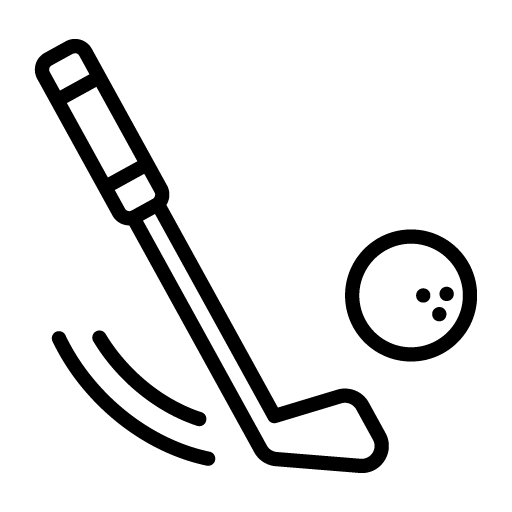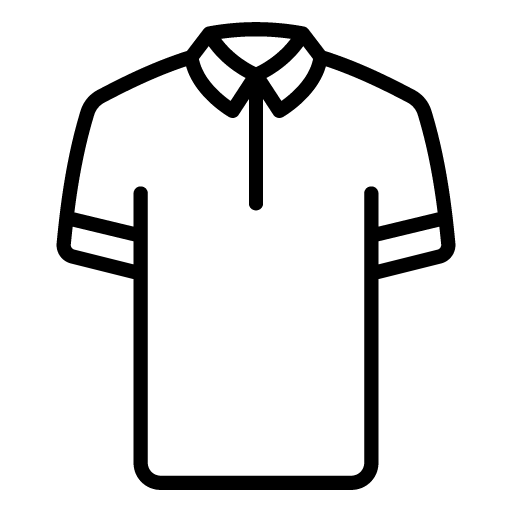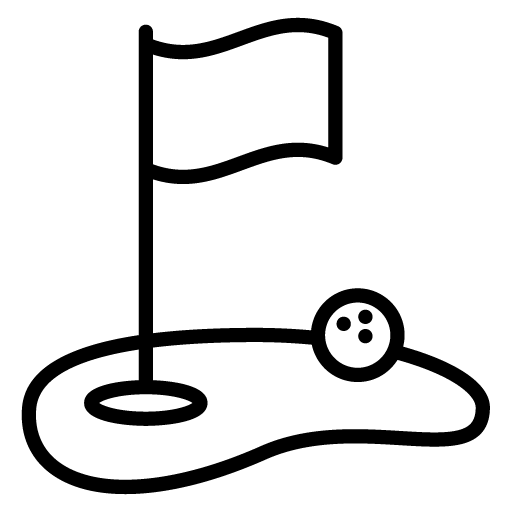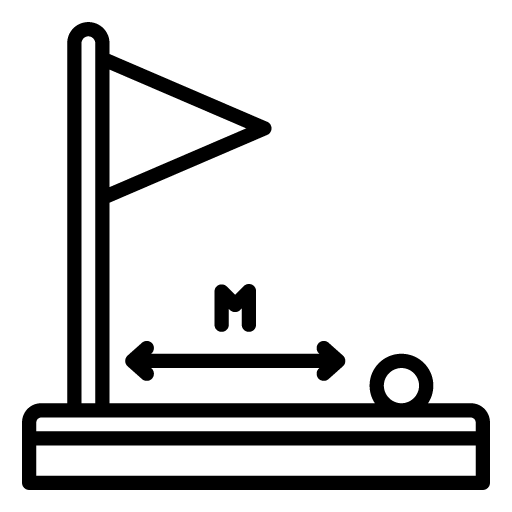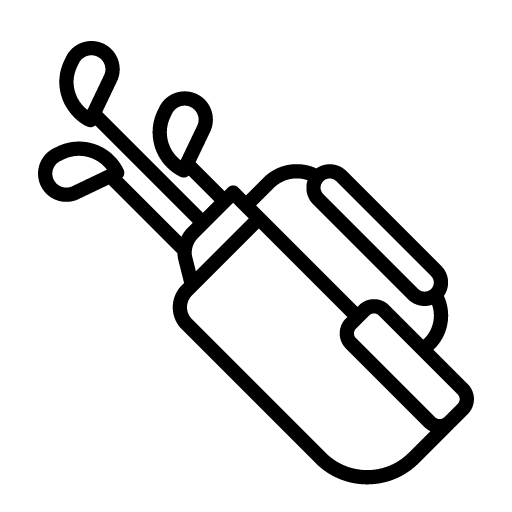From the White Tees:
Hole #1 – 379 Yards – Par 4
The first hole at Hope Valley Country Club is a downhill, relatively short par 4. With a decent drive, you will have an 8 iron or less into the green. The defense of this hole is the creek that runs across the fairway about 100 yards in front of the green. Most bombers will not hit driver on this hole as the creek will come into play.
There is out of bounds left so it is very easy to push a drive right. If you push a drive too far right, you are blocked out from the green, by trees, and will have to punch out and basically lay up in front of the creek. If you hit a 240 yard drive that is 20 yards or more right, you are going to be forced to punch out. There is no way you can get to the green.
While most Donald Ross courses ease you into your round, hole #1 at Hope Valley Country Club is actually the 9th handicap hole on the course. Some would argue it is harder than that because it is your first two shots of the day. The safe play off the tee box is to hit a 230 yard shot which will leave you about 130 into the green. The entire first fairway is downhill so if there are dry conditions, you will get quite a bit of roll.
Note that if you miss the fairway you are going to get almost no roll. The bermudagrass rough is very thick and will grab your ball. The low handicap players will hit as little as 6 iron from the tee while a more aggressive play would be a hybrid. Most high handicappers will hit driver with the hope that it lands somewhere in the fairway.
The second shot is what makes the first hole such a challenge. No matter where you are on the fairway, you will likely have a downhill lie into an uphill green. You can blast it down to the edge of the creek and get a flat lie but that is very risky.
The average golfer will have about 135-140 yards into the green. There are bunkers on each side of the green and there is out of bounds over the green. Therefore, the miss is short. Note that this is not a small green but it can be difficult to hit as it will be your first iron shot of the day. If you are a very high handicapper and you struggle to get the ball off the ground, it is very easy to top one into the creek. Having played enough rounds with high handicappers, anything from 3 to 10 can be achieved on this hole.
There is out of bounds right of the green so if you push your iron shot 15-20 yards right you could bounce out of bounds or be down by a hedge line that will often give you an unplayable lie. No matter where the pin is on #1, you will likely want to land a touch short. If you attack a pin that is on the back of the green, you are risking hitting it long and going out of bounds. Any shot to the middle of the green on hole #1 would be considered a good shot.
Although the green is elevated from the fairway, it seems to be the case that every putt is downhill. You will never hear a Hope Valley member say, “this putt is uphill, hit it hard” on hole #1. There are a few tricky pins that can fool you from the outset. If you are putting from the left side of the green to the middle or right side of the green, the putt can be extremely fast even tough it looks flat.
There are also a few nuances in the middle of the green that make it difficult to drain a birdie putt. Remember when I said the miss is short? The false front of the green, a Donald Ross signature, will repel any shots on the front of the green and you will be left with an uphill chip or putt; if you prefer to putt from the fringe. That said, if you hit the uphill putt or chip too hard, you are guaranteed to go long and over the green. This is what makes Donald Ross courses so challenging. A two putt just short of the front of the green is very difficult.
While you will have a pitching wedge, 9 iron or 8 iron into this green, most would not call it a birdie hole. It will be your first putt of the day and it is not advisable to get aggressive before you have a feel of the greens. Many times I have been on the green in regulation only to three putt because the greens were rolling 12 or 13.
One word of caution. If you are in the left greenside bunker, any bladed or thin bunker shot is likely to go over the greens and out of bounds right of the green. I have seen this all too many times. Most are aware of this and end up chunking the bunker shot and leaving themselves with a 30 foot putt. The left bunker is almost impossible to get up and down from unless you have a very strong sand game.
Hole #2 – 192 yards – Par 3
After the challenging first hole, you embark upon the first of several long par 3s at Hope Valley. The white tees tend to play from 190 yards but are sometimes pushed up to 175 yards. If you are playing the 190 yard shot, it is slightly downhill but usually plays the distance.
There is a creek running across the “fairway” about 80 yards off the tee box. This only comes into play for very high handicap golfers. You’d have to completely miss a shot to hit it into the creek on #2.
One of the unique features of hole #2 is the powerlines that are over the right side of the green. There are many “folk legends” of people hitting the powerlines and the ball going in for a hole in one that didn’t count. I have heard stories that it happened a few years ago in the member guest. The gentlemen had to replay the shot and ended up taking a double bogey instead of his hole in one.
For most golfers, this is a hole where you can run up a long iron or hybrid. The front of the green is not protected making it accessible with a lower shot. If the ground is wet at all, you will have to carry it all the way to the green. If it is playing hard and fast you could hit something as short as 170 or 175 and it could run up onto the green and potentially over depending on trajectory and spin.
There is a bunker short and right and it gets plenty of play. If you quit on your shot or push it to the right, this bunker ends up being a popular place. Fortunately, this is a bunker most average golfers will be able to get up and down from quite often. In fact, any shot that is short of the green can be chipped rather close.
The shot you do not want to hit on Hole #2 is long or left. Long and left is completely dead. Long is an elevated tee box (blue tees) for hole #3 and you are always left with a downhill lie chip that is in thick rough. The likelihood of getting up and down from being long is very low. Left of the green is the white tee box for hole #3. You can end up with a pretty good lie over there simply because it is the tee box for #3. That said, it is not an easy up and down because all chips will hit a downhill slope on the green and take off.
Unlike hole #1, on hole #2 you can definitely have an uphill putt. Any pin in the back part of the green will be a slower, uphill putt from the front. These are putts you can get somewhat aggressive with. If you are behind the green or behind the pin, you are going to have a very fast, downhill putt.
An extremely difficult putt is when the pin is at the front of the green and you are putting from the left side of the green. This putt often snaps hard right as it gets to the hole. Getting the speed and line correct with this putt is almost never accomplished by anyone that is not familiar with the putt or a tremendous putter. If possible, do not miss the green pin high, left. That is a brutal chip shot.
Again, this would not be considered a birdie hole although it is the #13 hardest hole on the course. If you have a good 190 yard shot, you can birdie the hole but most amateurs aren’t stripping their 6 or 5 iron 190 on a line.
Hole #3 – 374 Yards – Par 4
You take a very short walk from #2 green to #3 tee box. It is about 15 steps. Although #3 plays shorter on the card than #1, it plays longer because it is not a downhill tee shot and the fairway narrows as you get closer to the green.
The tee shot calls for a five to ten yard power fade but if you overdo it there is a bunker on the right side of the fairway. There is also out of bounds about 25 yards right of the fairway and a creek 15 yards left of the fairway. For those that crush their driver, this is a wood or hybrid hole. It would be ideal to get as close as possible but I have seen many people hit a dead straight drive that ends up going into the creek or is blocked out for the second shot due to tree limbs.
Any driver over 250 will set you up with a short iron or wedge into this green. If you push your drive or hit a bit of a slice, you are going to have closer to 170-180 into the green. This is not a green in which you want to be hitting a long iron or a hybrid.
There is a bunker on the left side of the fairway but it is only about 200 yards off the tee box. Most people only hit it in this bunker if they snap hook a drive or hit a really bad tee shot. Any single digit handicapper won’t even notice this bunker. If you are a high handicapper that hooks the ball, the bunker will come into play. It is about a 180 yard shot from the bunker to get on the green.
Once you have hit a decent tee shot you are left with a straight forward iron shot into a relatively wide and deep green. From 150 yards out you will see two bunkers about 15 yards short of the green. This is a great indicator of how golf has changed over many decades. Remember, Hope Valley Country Club was designed in 1926 when the clubs were very different. Today, most would hit a 9 or 8 iron into the green and fly it the entire way.
Several decades ago, players had to run the ball up to the green from 150 or more. Splitting the two bunkers with a run up shot is extremely difficult. There is only about 15 yards between the fairway to run the ball up. I have seen many people do it but oftentimes they end up in one of the bunkers and are left with a 30 yard bunker shot. We all love those.
If you lose your drive right, you are going to be hitting out of the bermudagrass rough and will need to hit a fade. There is an overhanging tree on the right side of the fairway that comes into play if you have to play your second shot from the right rough. The further you hit your tee shot, and to the right, the more the overhanging tree comes into play. This is why it is imperative to get the ball in the fairway on hole #3.
If you hit your drive left, you are chancing going into the creek bed and having to drop on hardpan/gravel. This is the same small creek that goes in front of the tee box on hole #2. While it is not big, it has caused many players to accumulate a large score on hole #3.
The problem with the drop on #3 is there is often no grass around the creek bed and you will have tree trouble after your drop. If you hit your tee shot left and into the creek, you are going to take double bogey at best. Unless you have a 15 yard controlled draw off hardpan, you are not going to be able to hit the green from this spot.
Let’s say you hit a great drive and have 135 into the green. The pin placement is very important on this hole. Remember, it is a large green. If the pin is back and you hit it on the front of the green, you are going to three putt. Mark it down. If the pin is in the front and you hit a thin shot that goes to the back of the green or over, you are going to three putt. I promise.
Make certain you get your correct yardage. Distance control is much more important than direction with the second shot. Unless you pull or push your iron 20 yards left or right of your target, you are going to be on the green. The creek on the left side does run all the way down past the green (on the left) but this rarely comes into play. The only way you are going to hit your approach shot into the creek is if you completely pull your iron shot or try to hit a fade out of the right rough and it stays straight.
About this time is when most people ask me what I do for a living. There is always a feeling out period on a golf course in which other golfers wait to ask you about your personal life. The green of hole #3 is when the occupation topic comes up. This is where I tell people I help businesses or professionals rank in Google for something like Orthodontist in Raleigh, NC or dentist in Richmond, VA. Most people understand when I tell them I help you rank higher in Google Search. It is a short conversation but some of them will mention they know a friend or family member that “needs that”. I brush it off and tell them we will discuss it later, after the round.
As you approach #3 green, you would assume it is very flat. Well, that is what Donald Ross does to you. There is almost never a straight putt on this green. No matter where Dr. David Lee puts the pin, you are going to have to marry the speed and line to have a birdie. Some of the more treacherous holes on this green are anywhere on the right side or the front. Most people are confused with the breaks and nuances on the right side of this green. It always seems to be extremely fast as well.
For some reason, this hole yields more birdies than holes #1 and #2 but it is harder on the scorecard. It is handicap #7 on the scorecard meaning a lot of pretty good golfers will be getting a stroke. Trust me when I tell you, you will need a 4, net 3 to win this hole in most games at Hope Valley. Rarely does a bogey win this hole.
Chipping onto this green can be very confusing. After the first two greens, you have seen the speed. You know when chips land they are going to roll out and be very fast, especially on hole #2. Weirdly, chips onto hole #3 seem to be much slower. Almost everyone leaves their chips short on this hole. Visually, it looks as if everything runs away, but as soon as the ball starts rolling on the green you realize it is going to be well short. If you are chipping onto hole #3, you can hit it a little more firm or with lower trajectory and you don’t have to worry about looking like a fool.
This is considered a birdie hole for many so do your best to get on the green in regulation and one putt. I can promise you that doing that on hole #4 is almost impossible. If you can get out of the first three holes even or one over, you are doing very well. You will expect a bogey or worse on hole #4.
Hole #4 – 418 Yards – Par 4
Hole #4 is the hardest hole on the front 9 – by far. After you walk off #3 green, you are on #4 tee box. In fact, I have played many rounds in which a ball will land about five or 10 feet from #4 tee box when we are teeing off. It can be a little unsafe if you have high handicap players hitting into #3 and you are standing on #4 tee box.
As if 418 yards is not enough, the second shot plays about 25 yards uphill, maybe more. On the tee box, you want to get as much on your drive as you can. Unfortunately, this often means spraying it a little bit right or a little bit left. If you go left, you will be blocked out by trees or overhanging branches. There is room left, but a drive 20 yards left of the fairway will force you to punch out. If you go right, there is a road and out of bounds. It honestly takes a huge push right to get out of bounds. If you push your drive five to 10 yards right, you will usually still end up in the fairway. A push 20 yards right will mean you have to hit out of the rough and navigate a few trees that line the cart path.
There is a bunker on the right side of the fairway about 180 yards from the tee box. Unless you completely whiff your drive, you can easily get over this bunker. Once again, this proves the difference in golf over the last 80 years. At one point, that bunker was in play from the tee box. The hard thing to imagine was playing out of that bunker and attempting to get it on the green. From the right side fairway bunker, the green is about 225 yards and it is all uphill.
If you are a bomber, there is a bunker on the left side of the fairway about 280 yards off the tee. I have seen some of the better golfers at Hope Valley hit it very close or into this bunker. A great drive would be in the fairway around the bunker. Anything past the bunker would be a 300+ yard drive. Only a few of the great players can do that.
Most golfers end up with around 180-200 yards left into the green. Note that if you hit a drive over 225 you will hit a downslope and get a few extra yards. You will need all of them. If you are in the 180-200 yard range you can plan on hitting a wood. It plays, at least 20-30 yards, uphill. The most challenging part of this shot is the green has a very steep false front and if you miss to the left hand side of the green it is going to roll off and into the rough.
This means you have about a 30 foot landing area from 225 yards. Good luck. Many of the shorter hitters will just lay up to 75 yards and try to get up and down for par. Remember, this is the #1 handicap hole on the course so you will likely be getting a stroke. If you decide to go for the green there is a greenside bunker right and a bunker about 30 yards short of the green left. The left bunker is death. If you hit it in the left bunker, you are going to take a double bogey, just write it down.
The right greenside bunker isn’t an easy shot but you can at least get it on the green and give yourself a chance at par. The biggest issue with the greenside bunker right is if the pin is in the front or on the left side of the green. If you don’t carry the shot long enough, it will roll off the false front and you will be struggling for bogey.
Hitting the green from the fairway is a tremendous success. While the bombers can do it 75% of the time, most average golfers are glad to hit this green two out of 10 times. It is nearly impossible to birdie and a par would be considering marvelous.
Now that you are on the green, the adventure really starts. This is one of the hardest greens to putt on all of Hope Valley. You want to try to be aggressive to save par or bogey but this green is treacherous. Any pin on the front will leave you putting defensively. If the pin is back right you will find that it breaks about 10 feet and rolls out a ton. I have seen dozens of players putt it off the green when the pin is back left. The easiest pin is on the right side of the green but that is no bargain either.
In my opinion, this is one of the hardest holes in all of the Triangle (Raleigh, Durham and Chapel Hill). The distance is tough, the second shot plays significantly up hill, the green is bowled and the putting is mentally taxing. Other than that, it is an easy hole.
Hole #5 – 396 Yards – Par 4
After your bogey or double bogey, you walk to a very difficult par 4. It is especially difficult for those that cannot hit their driver over 240 yards. The tee shot can make or break hole #5 for you. Ideally, you will want to hit a 10 yard dry on the right side of the fairway but it needs to carry 230 or 240 to get over a hill that is on the right side of the fairway and in the rough.
If you push, slice or fade the ball into this hill, it is going to be nearly impossible to get the ball on the green in two. If you are someone that can hit your driver 250 in the air and can control it, you will be able to excel on the fifth hole. If you are a shorter hitter and your driver is a little wayward, you are going to take bogeys and double bogeys on this hole every single time you play Hope Valley.
After hitting a shorter drive and being on the hill on the right side or in the rough on the right, you will have between 180 and 210 to the green. You are almost always left with an awkward lie. The one good thing about this shot is it calls for a fade or a slice. Most amateurs that are hitting it less than 240 yards with their driver likely fade the ball anyway.
I have seen everything from a driver off the deck to a 4 iron from the hill on the right side. Unfortunately, if you do not fade the ball, if you left it left of the green, you are asking for a bogey or a double bogey. Ideally, you want to leave the ball right of the green as it will feed down towards the green if it lands on the right hand side. If you hit it far right, you are going to be left with a very tricky downhill chip.
Let’s say you are a very good driver of the ball and you can hit it 260 or 270. You will be left with less than an 8 iron into the green. Remember, that hill on the right side of the fairway has two sides. If you land on the other side of the hill the ball will carom forward. Beyond the hill, you often end up in the fairway with a straight forward 120 yard shot into the green. I have seen some very good golfers have as little as 80 yards into the green.
For those that have played Hope Valley, they know this green can be very tricky. If the pin is on the front left, any putt from the back of the green is extremely fast. That said, if the pin is back right, everyone leaves the putt short. It is also a green that has a ton of break. Those playing Hope Valley for the first time never see the huge break on the putts on this green.
It took me about two months to get comfortable on #5 green. There are still some putts that are tricky because you do not want to race your putt by the hole when coming from the back of the green to the front of the green. Even though the putts from the front to the back are a little slower and uphill, you definitely do not want to blast it by and be left with a five foot comebacker that is downhill and sliding.
I have seen very good players putt the ball off this green numerous times. If you putt off of #5, do not feel bad. It can be visually deceiving. You will likely be trying to save par or bogey with your putt anyway so it is very easy to get aggressive. Fortunately after #4 and #5 the front 9 opens up a little bit for some scoring.

